The stress-strain graphs for two materials are shown in Fig. 7(EP).3 (assume scale).
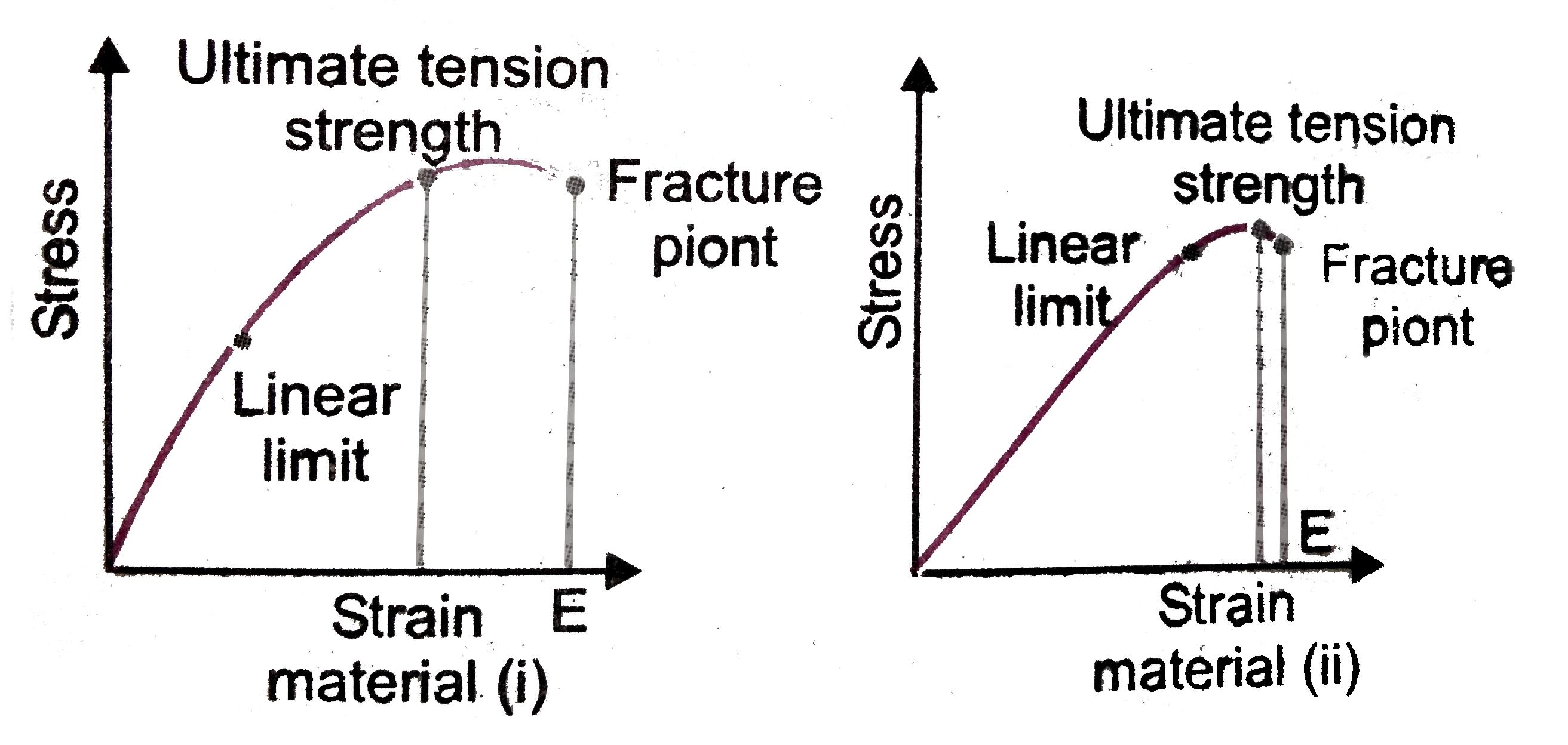
Material (ii) is more elastic than material (i) and hence material (ii) is more brittle.
Material (i) and (ii) have the same elasticity and the same brittleness.
Material (ii) is elastic over a larger region of strain as compared to (i).
Material (ii) is more brittle than material (i).
The correct Answer is:C, D
From graphs it is clear that ultimate strength of material (ii) is greater than that of material (i). Therefore, the elatic behaviour of material (ii) is over a largeer region of strain as compared to matterial (i). If the fracture point of a matterial is closer to ultimate strength point, then the material is a brittle material. Therefore, the material (ii) is more brittle than material (i).
Topper's Solved these Questions
- BOOK - PRADEEPCHAPTER - PROPERTIES OF BULK MATTEREXERCISE - Multiple choice questions-I173videos
PROPERTIES OF BULK MATTER
- BOOK - PRADEEPCHAPTER - PROPERTIES OF BULK MATTEREXERCISE - Integer Type Questions12videos
PROPERTIES OF BULK MATTER
- BOOK - PRADEEPCHAPTER - PROPERTIES OF BULK MATTEREXERCISE - Problmes for Practice198videos
PROPERTIES OF BULK MATTER
- BOOK - PRADEEPCHAPTER - PHYSICAL WORLD AND MEASUREMENTEXERCISE - Competiton Focus Jee Medical Entrance18videos
PHYSICAL WORLD AND MEASUREMENT
- BOOK - PRADEEPCHAPTER - RAY OPTICSEXERCISE - Problem For Practice(a)25videos
RAY OPTICS
Similar Questions
The stress-strain graphs for two materials A and are shown in figure. The graphs are drawn to the same scale. Select the correct statement
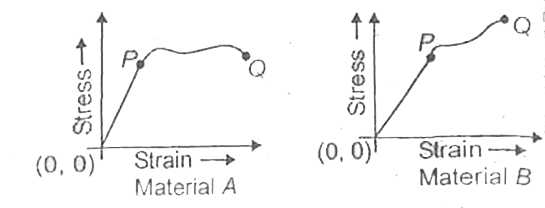 View Solution
View SolutionThe stress-strain graphs for two materials A and B are shown in the figure. The graphs are drawn to the same scale.
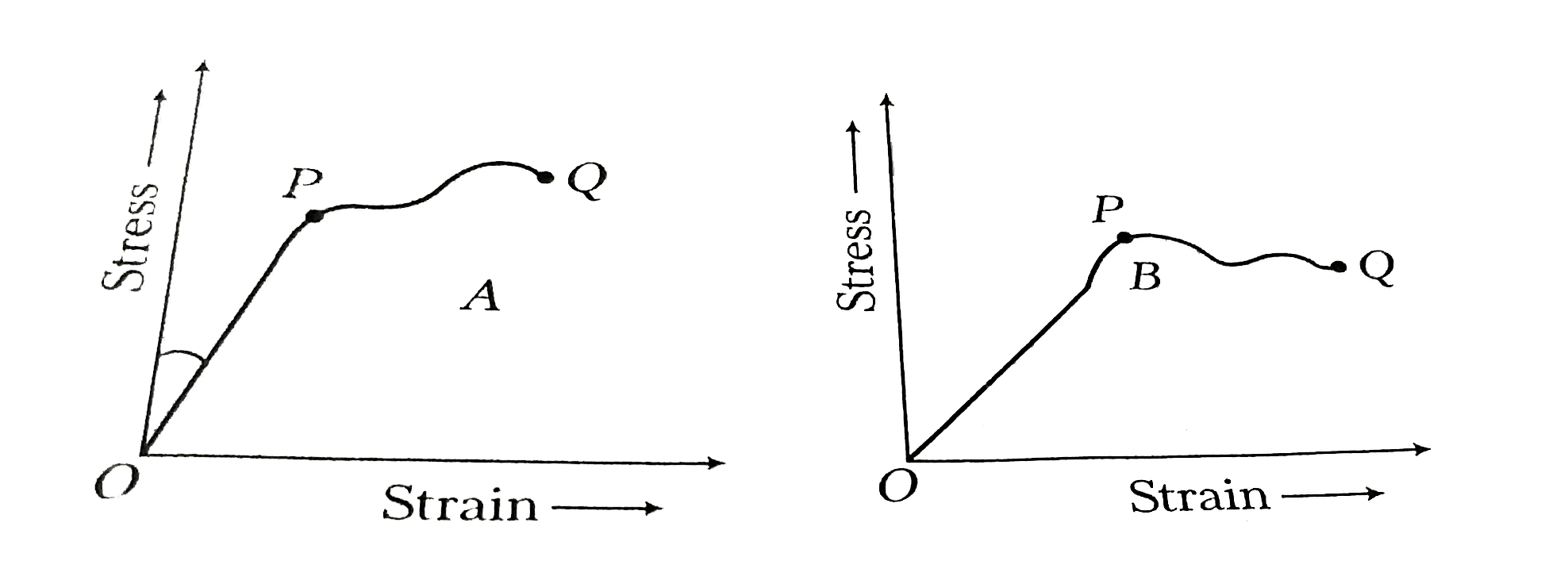
(a) Which material has a greater Young's modulus ?
(b) Which material is more ductile ?
(c) Which material is more brittle?
(d) Which of the two is the stronger material ?View Solution
Knowledge Check
- Question 1 - Select One
The stress and strain graphs for two materials, A and B are shown here. Answer the following:
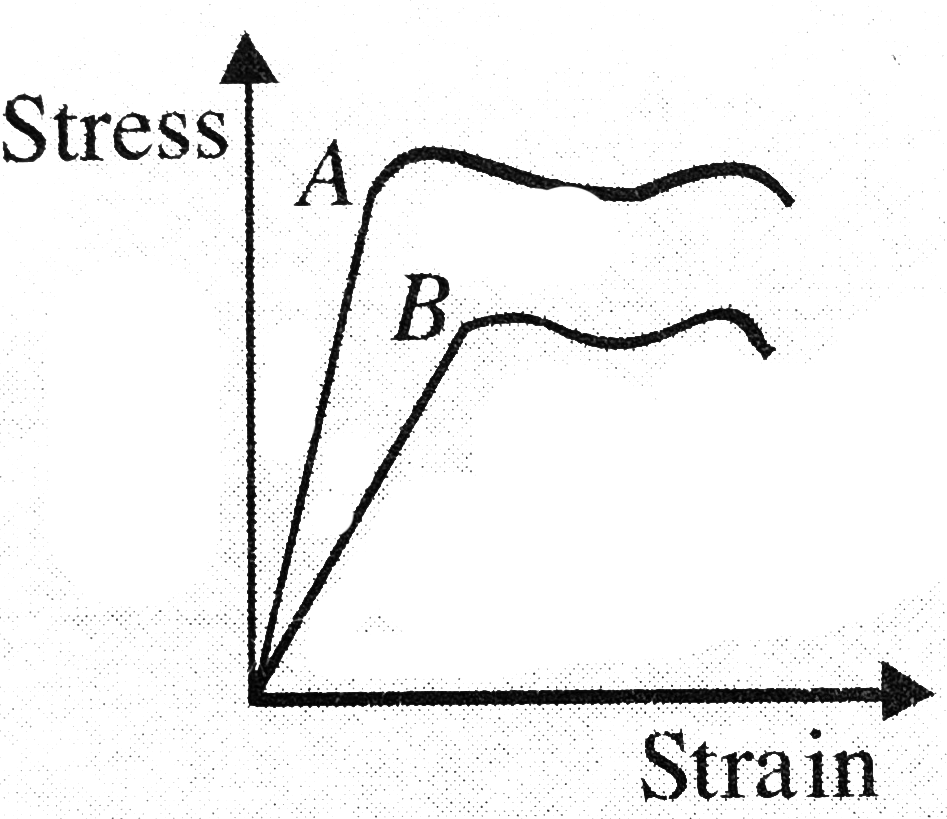 give reasonsAWhich material has greater Young's modulus?BWhich material is more ductile?CWhich material is more brittle?DWhich material has greater tensile strength?
give reasonsAWhich material has greater Young's modulus?BWhich material is more ductile?CWhich material is more brittle?DWhich material has greater tensile strength? - Question 2 - Select One
Materials get deformed when force is applied. Some of them regain their status when the applied force is removed. They are termed as elastic. Those of which not regaining are called plastic. There may be delay in the regaining in some materials. They are said to have got elastic aftereffect, since they have gone beyond the elastic limit. Repeated application and removal of force leads to fatigueness in the material. Fatigued materials may break at any point time and so are avoided.
The stress strain graph for two materials A and B is shown in the following figure:
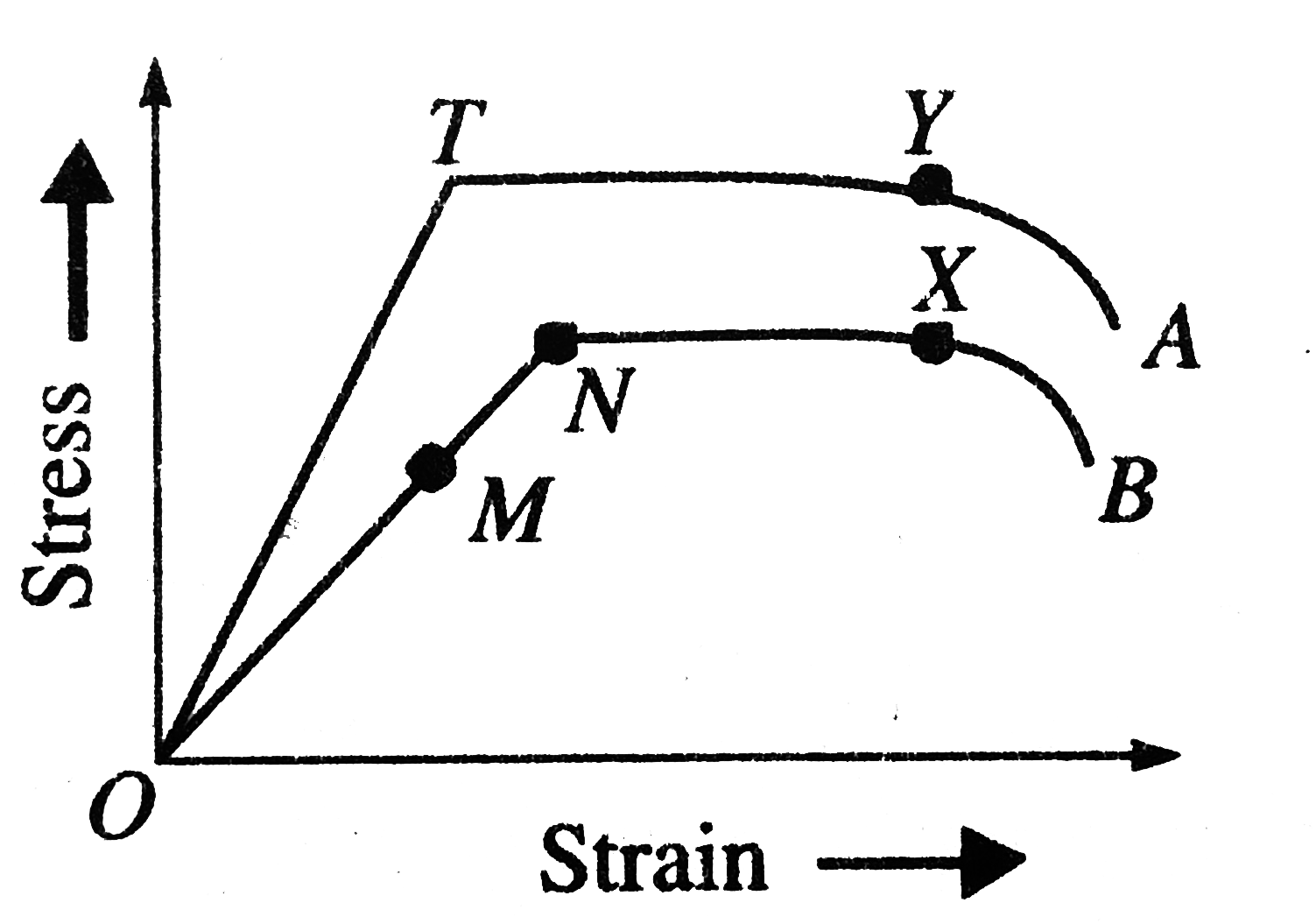
The time in which the two materials regain their original status is tA and tB related as tB=2tB. Then the material under elastic aftereffect (relatively) isABBACboth A and BDneighter A nor B - Question 3 - Select One
The stress versus strain graphs for wires of two materials A and B are as shown in the figure. If YAandYB are the younng's moduli of the materials, then
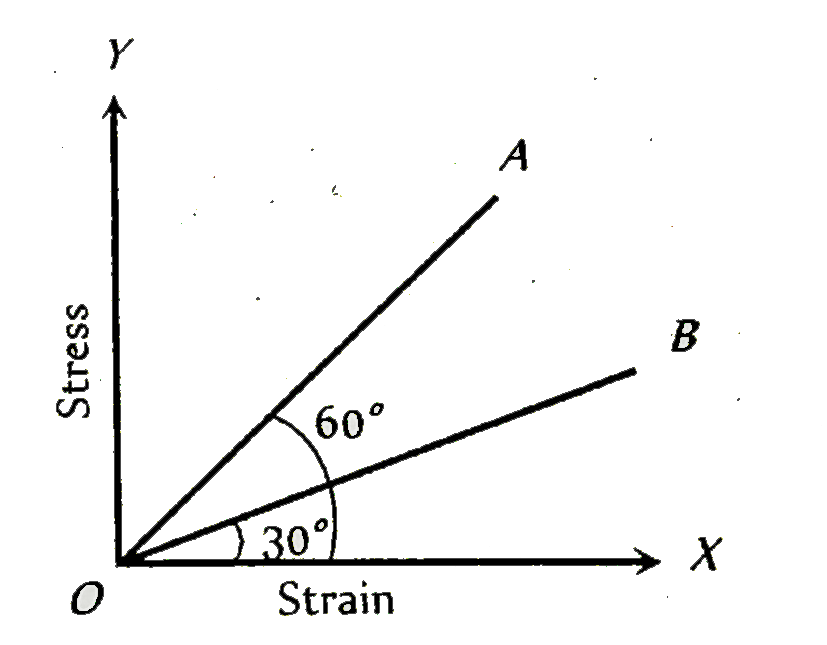 AYB=2YABYA=YBCYB=3YADYA=3YB
AYB=2YABYA=YBCYB=3YADYA=3YB
The stress versus strain graph for two materials A and B are shown in fig. the graph are on the same scale. ltbr> (a) Which materail has greater Young's modulus?
(b) which of the two is stronger materail?
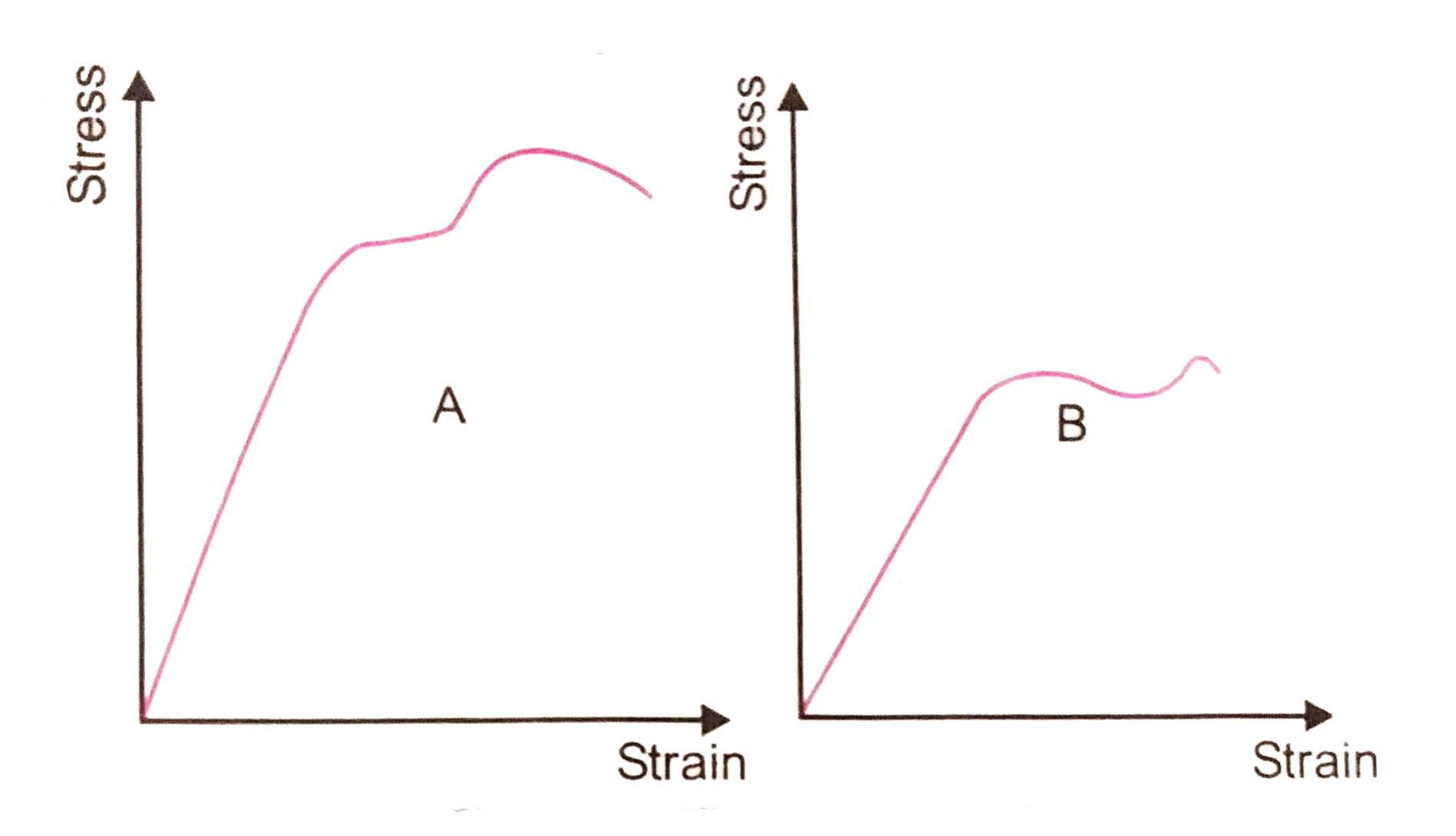 View Solution
View Solution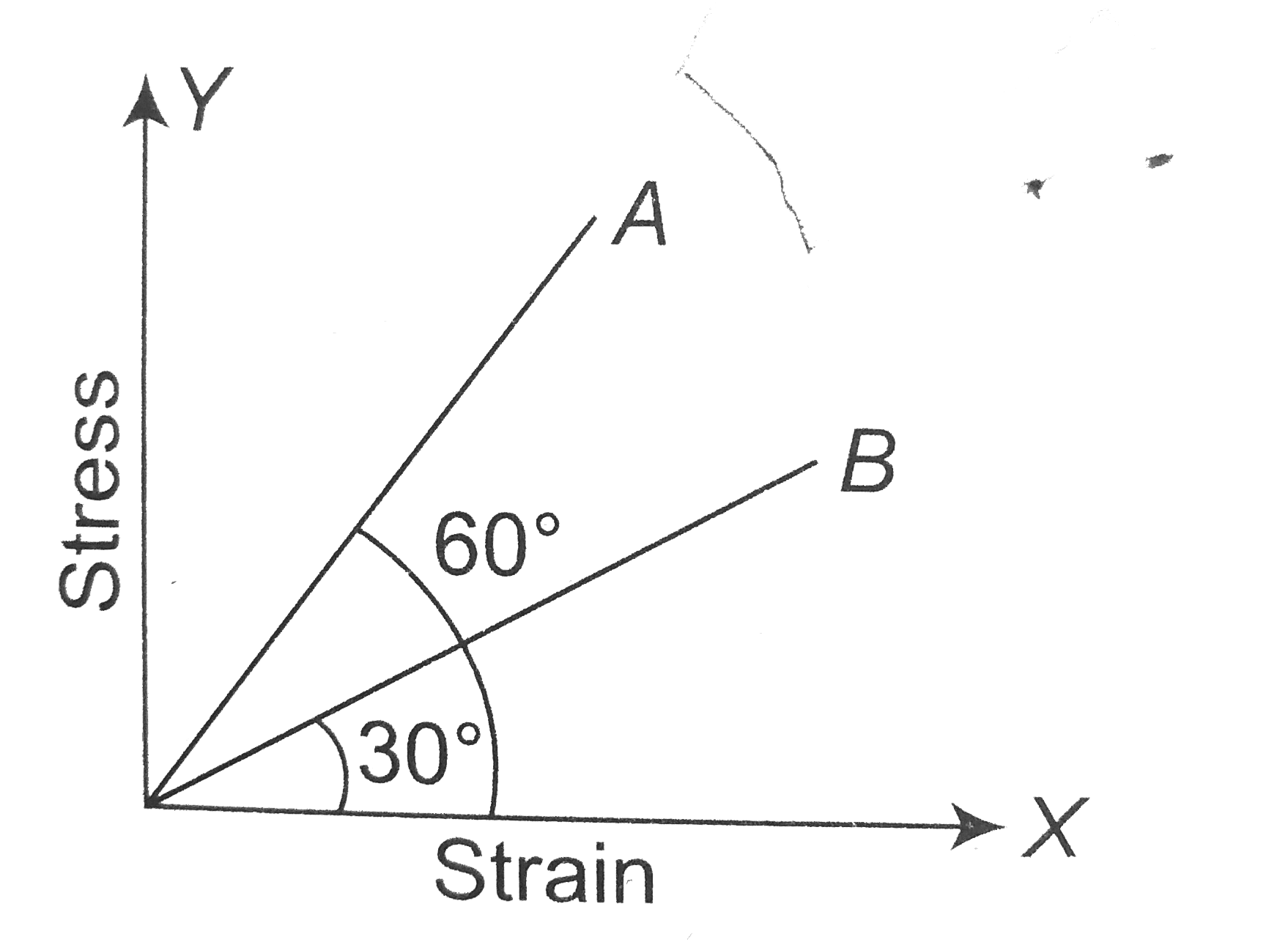
The stress versus strain graphs for wires of two materials A and B are as shown in the figure. If YA and YB are the Young's moduli of the materials thenView SolutionThe stress- strain graphs for materials A and B are as shown. Choose the correct alternative
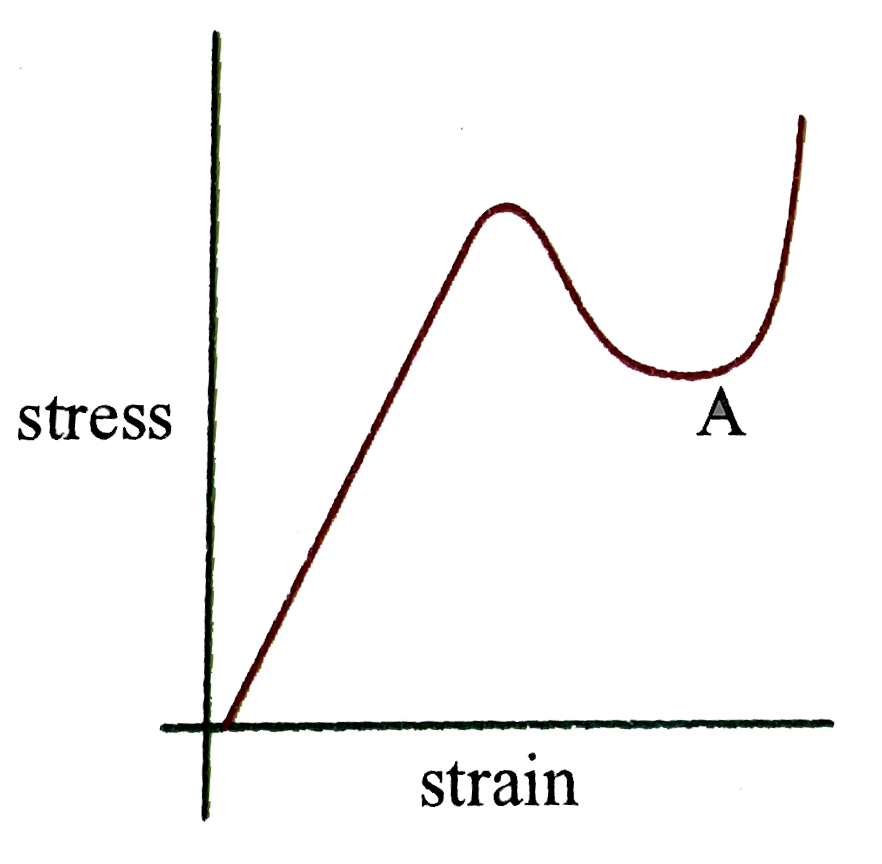
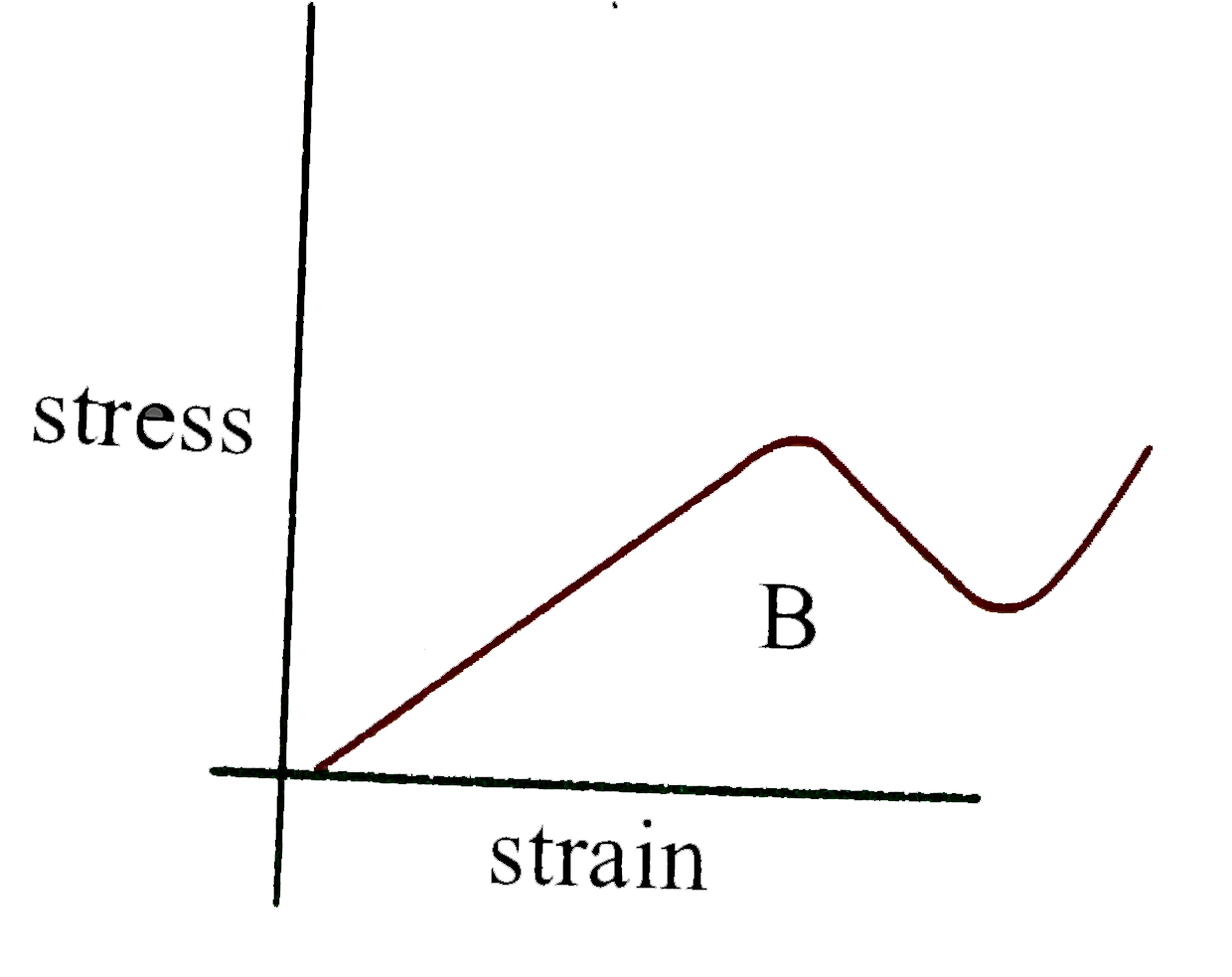 View Solution
View Solution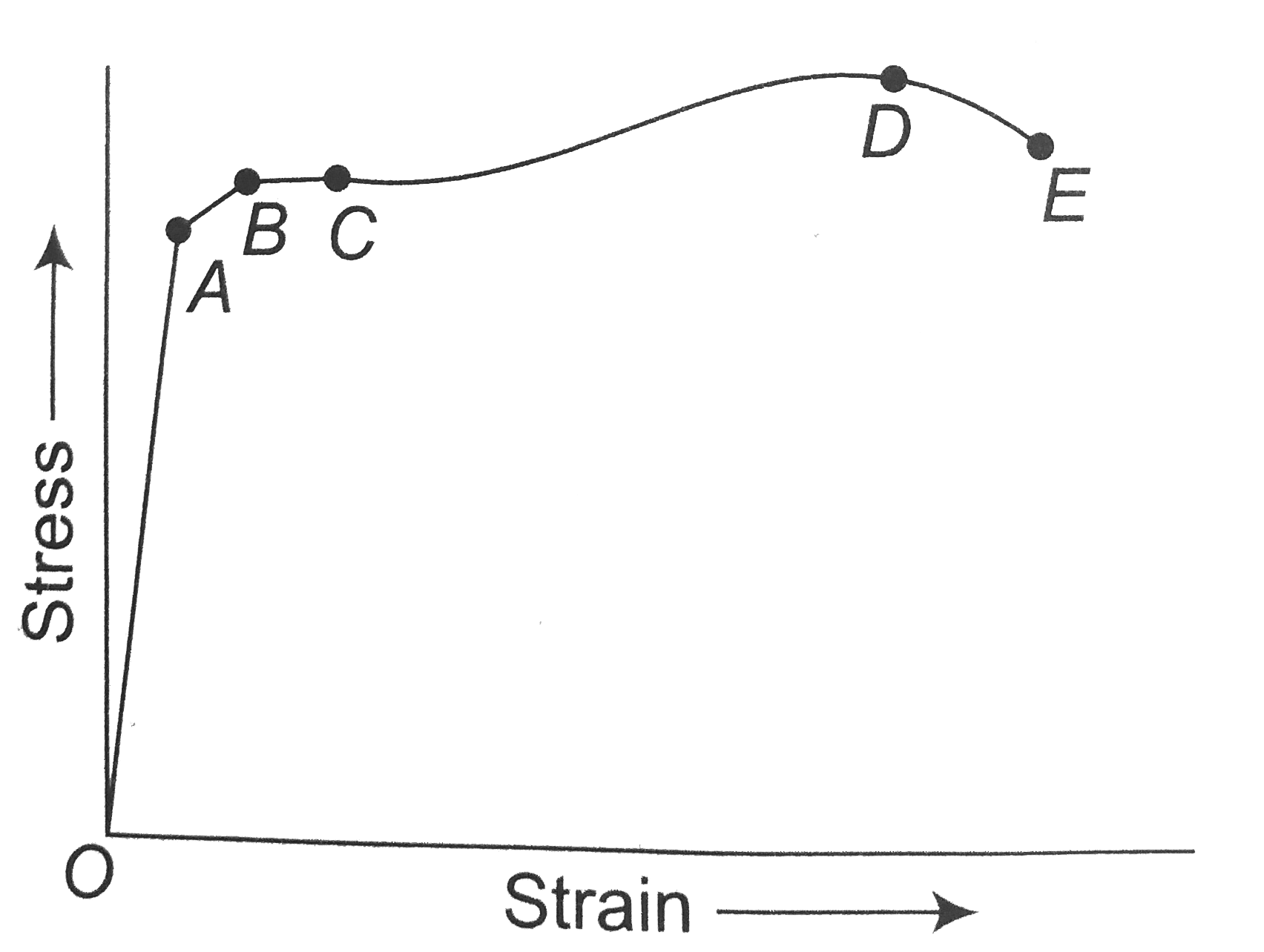
The stress strain graph for a metal wire is as shown in the figure. In the graph, the region in which Hooke's law is obeyed, the ultimate strength and fracture are represented byView SolutionMaterials get deformed when force is applied. Some of them regain their status when the applied force is removed. They are termed as elastic. Those of which not regaining are called plastic. There may be delay in the regaining in some materials. They are said to have got elastic aftereffect, since they have gone beyond the elastic limit. Repeated application and removal of force leads to fatigueness in the material. Fatigued materials may break at any point time and so are avoided.
The stress strain graph for two materials A and B is shown in the following figure:
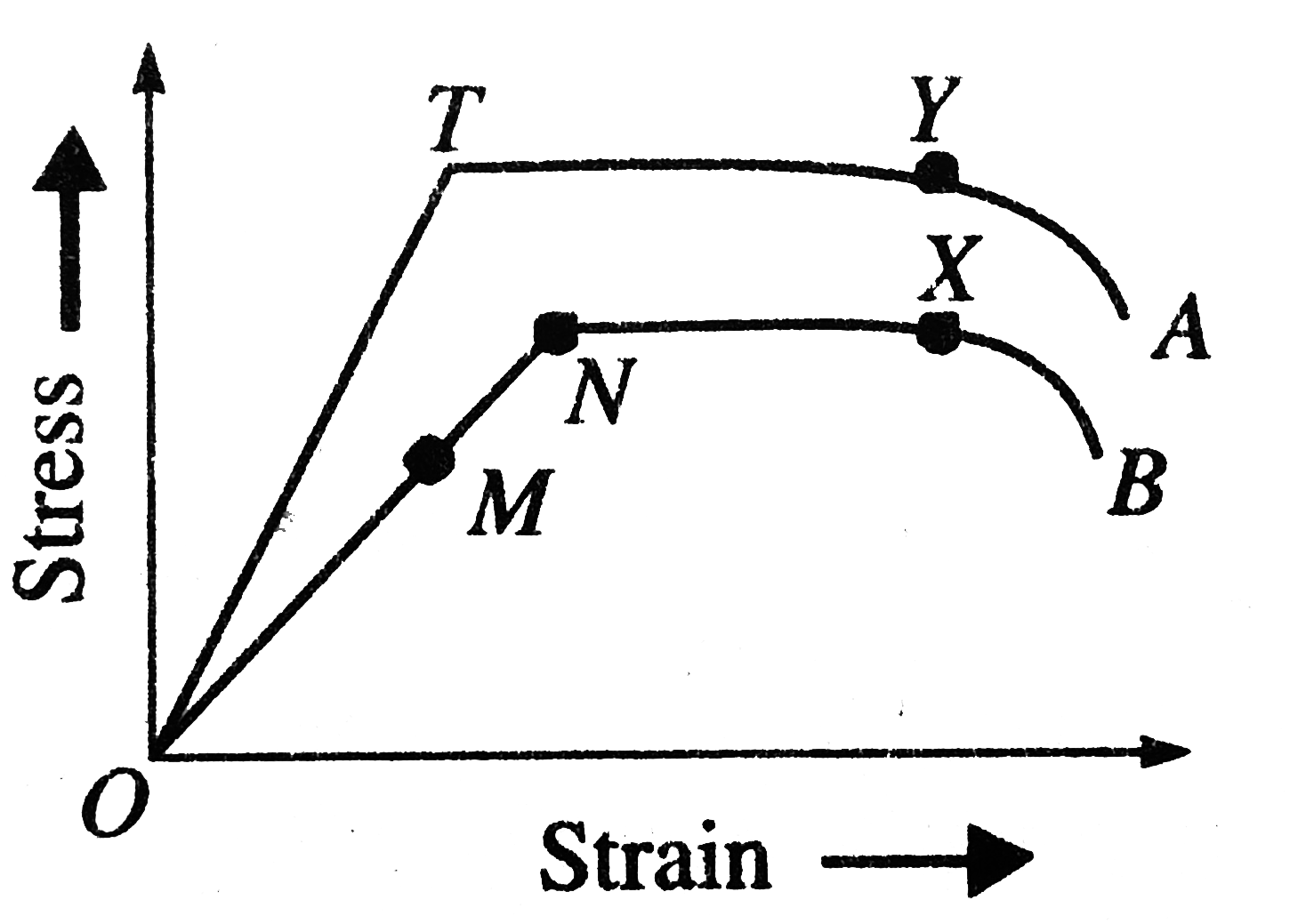
The strength of the material A and B is SA and SB, respectively, while the longevity of plastic behaviour is LA and LB. ThenView Solution

